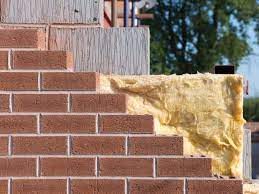At a time when there’s understandably heightened awareness around energy efficiency and environmental responsibility, homeowners are seeking ways to enhance their homes’ sustainability to save money and increase the value of their properties. One method that’s gained significant traction in the UK over the last few years is cavity wall insulation.
While it offers numerous advantages, however, from thermal enhancement to cost savings, it’s essential to evaluate if it’s the right fit for your home before pulling the trigger, because it can be a costly and disruptive remodelling job.
Understanding Cavity Wall Insulation
Cavity wall insulation refers to the process of filling the space (or “cavity”) between two external walls with insulating material. This material acts as a thermal barrier, preventing heat from escaping during colder months and entering during warmer ones. As a result, homes can achieve significant energy conservation, contributing not only to lower bills but also to a reduced environmental footprint.
Assessing Your Home’s Suitability
A home’s eligibility for cavity wall insulation depends on several factors:
Age & Construction Material – Homes built after the 1920s often have cavity walls, making them ideal candidates for insulation. If your home is older, however, the walls might be too solid to qualify. The good news, however, is that solid walls are already great insulators.
Wall Type – It’s imperative to check if your home has cavity walls or solid walls, as only the former is suited for this type of insulation.
Existing Insulation – If insulation is already present, its condition and effectiveness must be evaluated before considering an upgrade or replacement.
The Installation Process
Typically, small holes are drilled into the external walls, through which insulating material is injected into the cavity. Once filled, the holes are sealed, leaving the facade relatively unchanged. It’s crucial for professionals to undertake this process, ensuring safety precautions are adhered to and avoiding potential issues later.
Risks Leading to Legal Claims
Not all cavity wall insulation ventures end positively. Issues like dampness, incorrect installation, or use of subpar insulation materials can arise. These complications not only compromise the home’s integrity but can also lead to health hazards. Consequently, homeowners might find themselves embroiled in cavity wall negligence claims seeking compensation for the oversight.
Advantages and Disadvantages
Every home improvement decision should be made after weighing the pros and cons:
Advantages – Enhanced energy efficiency, potential for reduced heating bills, improved home comfort, and a positive step toward environmental responsibility.
Disadvantages – Installation might cause some disruption, and if not executed correctly, can result in problems like dampness or structural damage.
While cavity wall insulation offers a compelling proposition for energy efficiency and environmental stewardship, it’s imperative to ensure your home is suitable and the process is undertaken diligently. As with any home improvement, research, expert consultations, and proactive decision-making are always going to be key.

